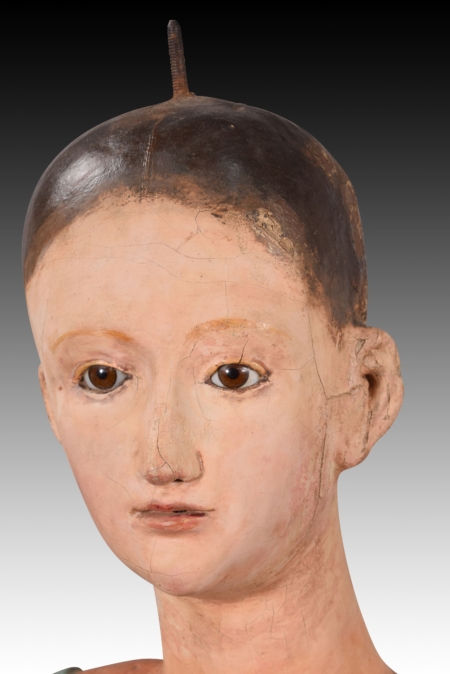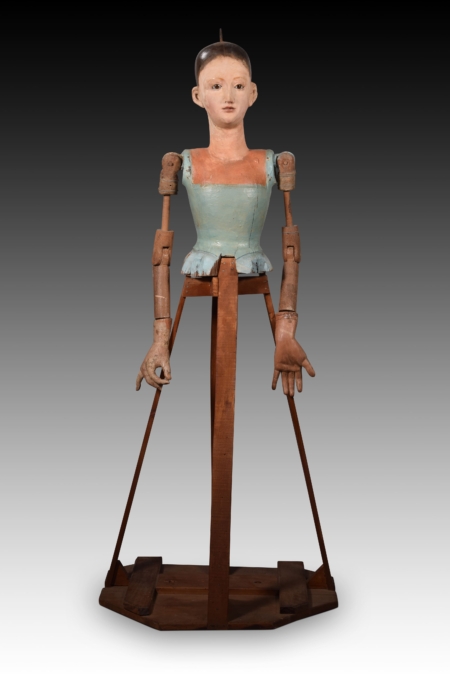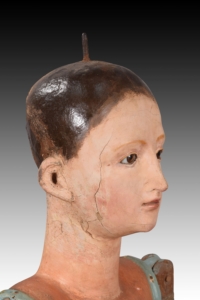Description
The tradition behind “Cap i Pota”
The term “Cap i Pota”, which literally means “head and feet,” describes a distinctive style of wooden sacred art sculptures in which only the visible parts of the figure—head, hands, and feet—are carved. The rest of the body is subtly suggested in the wood, serving as a framework for dressing the figure with textiles rich in history and tradition.
Unlike similar sculptures from other regions, such as the so-called “candlestick” figures, Catalan “Cap i Pota” sculptures include carved feet and a roughly shaped body, offering a higher level of detail. This unique style reflects the popular religious devotion of both urban and rural communities and was commonly used in private homes and oratories as a symbol of faith and tradition.
Sacred art full of history and meaning
This sculpture is much more than a work of art; it is a living testament to the religious traditions of the 16th century. Its use in personal devotional spaces and its preservation over the centuries make it a unique collectible piece, ideal for those who appreciate religious art and historical Spanish imagery.
Perfect for:
- Collectors of sacred art and antique religious sculptures.
- Enthusiasts of popular religious culture and historical traditions.
- Decorating spaces with a focus on historical and spiritual art.
This post is also available in: Spanish




























